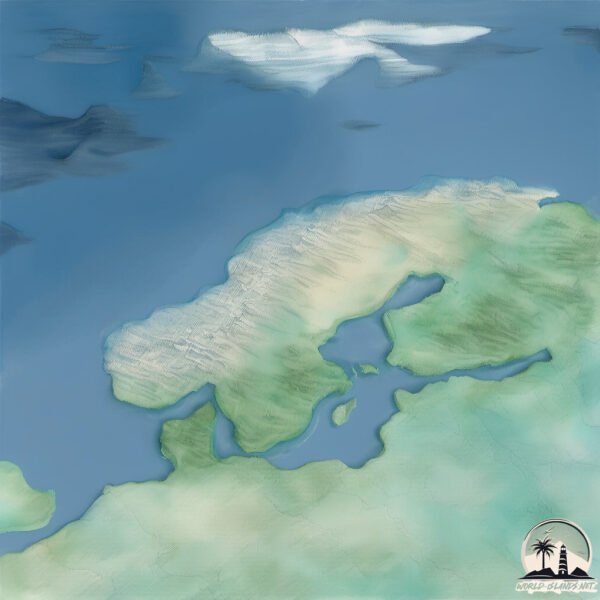Welcome to Langoya , a Continental island in the Norwegian Sea, part of the majestic Atlantic Ocean. This guide offers a comprehensive overview of what makes Langoya unique – from its geography and climate to its population, infrastructure, and beyond. Dive into the details:
Geography and size of Langoya
Size: 2.234 km²Coastline: 12.8 kmOcean: Atlantic OceanSea: Norwegian SeaContinent: Europe
Langoya is a Small Island spanning 2.2 km² with a coastline of 12.8 km.
Archipel: Vesterålen – A district and archipelago in Norway, north of the Lofoten, known for its stunning landscapes, fishing culture, and whale watching.
Tectonic Plate: Eurasia – One of the world’s largest tectonic plates, the Eurasian Plate covers a significant portion of Europe and Asia. It’s characterized by diverse geological features, including the Ural Mountains, the European Plain, and the Himalayas formed from its collision with the Indian Plate.
The geographic heart of the island is pinpointed at these coordinates:
Climate and weather of Langoya
Climate Zone: ContinentalClimate Details: Subarctic ClimateTemperature: Cold Summer
Climate Characteristics: Characterized by long, extremely cold winters and short, cool summers, often found in northern latitudes of North America and Eurasia.
Topography and nature of Langoya
Timezone: UTC+01:00Timezone places: Europe/ParisMax. Elevation: 611 m Mean Elevation: 172 mVegetation: Open WoodlandTree Coverage: 37%
The mean elevation is 172 m. The highest elevation on the island reaches approximately 611 meters above sea level. The island is characterized by Plateau: Elevated flatlands rising sharply above the surrounding area, with a maximum elevation over 500 meters but a mean elevation less than 300 meters, forming unique highland areas on islands.
Dominating Vegetation: Open Woodland
Vegetation: 11 vegetation zones – Exceptionally Diverse Island
Infrastructure and Travelling to Langoya
Does the island have a public airport? yes .
Does the island have a major port? yes .
The mean population of Langoya is 14 per km². Langoya is Gently Populated. The island belongs to Norway .
The name of the island resonates across different cultures and languages. Here is how it is known around the world: Arabic: فيستريلان; German: Vesterålen; Spanish: Vesterålen; French: Vesterålen; Portuguese: Vesterålen; Russian: Вестеролен; Chinese: 西奧倫群島
Continuing your journey, Helgbustadoya is the next notable island, situated merely km away.
Langøya island views.
There is a small island in the southern part of Norway. Its name is Langøya. Here is some not so professional drone footage to ...
Langøya island views.
There is a small island in the southern part of Norway. Its name is ...
There is a small island in the southern part of Norway. Its name is Langøya. Here is some not so professional drone footage to ...
080 Norwegia wyspy Langoya Andoya Senja Norway Islands
Po Lofotach, czas na kolejne wyspy, równie urokliwe Langoya, Andoya i ...
Po Lofotach, czas na kolejne wyspy, równie urokliwe Langoya, Andoya i świetna Senja.
Gentleman Gipsy - Sandvika, Langøya, Vesterålen - Norway
Altri link dell'autore: Gentleman gipsy -- Nomade e gentiluomo ...
Norway is classified as Developed region: nonG7: Developed economies outside of the Group of Seven, characterized by high income and advanced economic structures. The level of income is High income: OECD.
News – Latest Updates and Headlines from Langoya
Stay informed with the most recent news and important headlines from Langoya. Here’s a roundup of the latest developments.
Loading...
Please note: The data used here has been primarily extracted from satellite readings. Deviations from exact values may occur, particularly regarding the height of elevations and population density. Land area and coastline measurements refer to average values at mean high tide.

